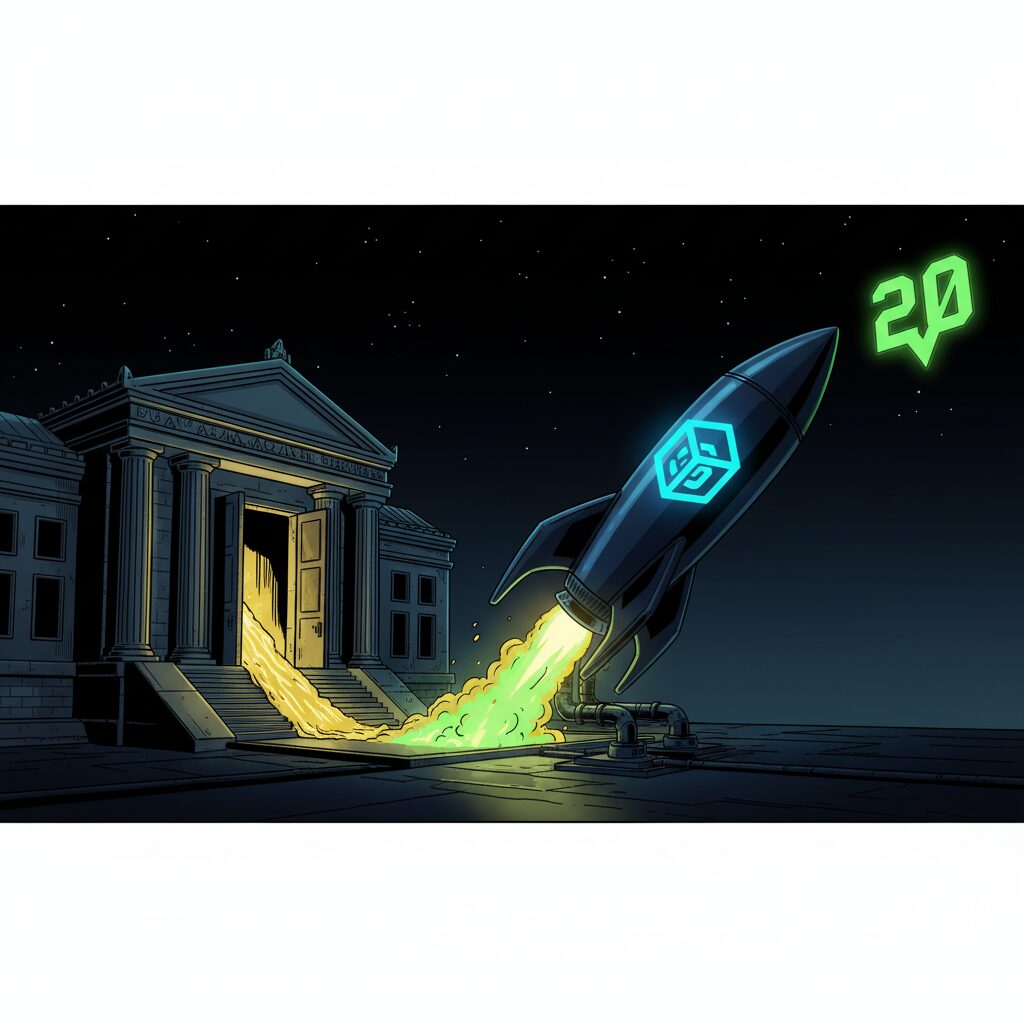DeFi and NFTs Thrive in Q3 2025 as Broader DApp User Activity Declines

The third quarter of 2025 presented a mixed but fascinating picture of the decentralized application landscape. While overall user engagement saw a notable downturn, key sectors like Decentralized Finance (DeFi) and Non-Fungible Tokens (NFTs) experienced record-breaking growth, highlighting a market that is both maturing and consolidating.
User Engagement Shifts as AI and Social Sectors Cool
A key trend for the quarter was a decline in overall activity. The average number of daily active unique wallets interacting with DApps fell by 22.4% compared to the previous quarter, settling at 18.7 million. This slowdown was most pronounced in the artificial intelligence and social categories, which had seen significant interest earlier in the year.
The AI sector’s daily active wallets dropped from 4.8 million in Q2 to 3.1 million in Q3, while the social sector saw an even sharper decline, falling from 3.8 million to just 1.57 million daily wallets. This cooling trend was reflected in the market share of these categories, with AI’s share dipping to 16.8% and social’s contracting significantly to 8.4%.
Gaming and NFTs Solidify Market Dominance
While some sectors cooled, gaming solidified its position as the undisputed leader in the DApp industry. Its market share grew from 20.1% to 25% in the third quarter, with titles like ‘World of Dypians’ and platforms such as HOT Protocol continuing to attract a large user base.
The NFT market demonstrated remarkable strength, with trading volume nearly doubling to reach $1.58 billion for the quarter. The number of individual NFT sales also hit a new quarterly high of 18.1 million units. The sports category was a particularly strong performer, with its transaction volume surging by an impressive 337% to $71.1 million, signaling growing interest in this niche.
DeFi TVL Reaches Record $237 Billion Amid Regulatory Clarity
The standout story of the quarter was the explosive growth in DeFi. The Total Value Locked (TVL) across all blockchain protocols reached a new all-time high of $237 billion. This surge was fueled by rising cryptocurrency prices, continuous innovation in lending protocols, and increased liquidity from new token ecosystems.
Progress on the regulatory front also played a crucial role. The passage of new cryptocurrency legislation in the United States, particularly frameworks for payment stablecoins, provided greater clarity for the industry. This, combined with billions of dollars flowing into Bitcoin ETFs from institutional investors and network launches from major financial players like Circle and PayPal, has bolstered confidence and capital in the DeFi space. In a positive development for security, losses from hacks and exploits fell to $434 million, the lowest point of the year, though the complexity of threats continues to evolve.
Disclaimer: The information provided in this article is for informational purposes only and does not constitute financial advice, investment advice, or any other sort of advice. You should not treat any of the website’s content as such. Always conduct your own research and consult with a professional financial advisor before making any investment decisions.
DeFi TVL Reaches New Peak While Market Leaders Face Headwinds
The third quarter of 2025 marked a new all-time high for the Decentralized Finance (DeFi) sector, with Total Value Locked (TVL) reaching a record $237 billion. This growth underscores increasing institutional interest in stablecoins and the tokenization of real-world assets, signaling a potential new wave of liquidity entering the market.
Despite its dominant position, Ethereum didn’t lead the charge this quarter. While it still holds the largest share with a TVL of $119 billion, its value declined by 4%. Solana, holding the second spot, experienced the most significant drop among the top ten blockchains. Its TVL fell by 33% to $13.8 billion, a downturn largely attributed to fading momentum from Pump.fun and associated meme coins.
In contrast, other blockchains demonstrated more optimistic performance. BNB Chain saw a boost from the launch of its perpetual DEX, Aster. The on-chain perpetual trading platform Hyperliquid also captured significant attention, with its TVL growing by 29% to $2.85 billion. These developments reflect a broader trend of decentralized exchanges gradually matching the functional sophistication of their centralized counterparts.
NFT Market Sees Record Sales Volume Driven by Existing Users
The NFT market set a new record for transaction volume in the third quarter, with over 18.1 million sales generating $1.6 billion. This follows a strong upward trend from 7 million sales in the first quarter and 12.5 million in the second. However, this surge in activity appears to be driven by existing participants rather than a major influx of new users.
While NFT sales grew by an impressive 158% between Q1 and Q3, the number of unique trading wallets only increased by 28.6% in the same period, from 1.66 million to 2.14 million. This suggests that existing collectors are trading more frequently, with the average number of NFTs traded per wallet doubling from 4.2 to 8.4.
The gaming NFT category was the only segment to show a decline, with trading volume falling 17% and units sold decreasing by 32%. Conversely, sports-related NFTs experienced explosive growth, with trading volume soaring 337% to $71 million and sales climbing 143% to 4.1 million units.
Platform-specific initiatives also fueled activity. An OpenSea campaign rewarding active traders prompted a flurry of low-value NFT trades, helping the marketplace increase its sales volume by 29% to 9.27 million assets. Meanwhile, Profile Picture (PFP) collections saw a resurgence, with trading volumes growing 187% to $544 million, led by projects like CryptoPunks, Bored Ape Yacht Club (BAYC), and Pudgy Penguins. Moonbirds also had a standout quarter, selling 8,311 NFTs for a total volume of $88 million after its intellectual property was acquired by Orange Cap Games.
Security Breaches Remain a Persistent Threat with $434 Million Stolen
Hackers and scammers stole over $434 million in cryptocurrency during the third quarter, primarily through social engineering and smart contract exploits. Major incidents included a $42 million loss from a malicious contract exploit on GMX V1 and a $44 million server breach at the CoinDCX exchange.
In September, a multi-signature vulnerability in the UXLINK project led to a $21.7 million theft. The attacker also gained minting rights, creating 1 billion new tokens and causing the price to crash by 70% after selling them. The quarter’s second-largest incident was a hack on the Turkish exchange BTCTurk.
However, the single largest loss came from a social engineering scam where a victim was deceived into sending 783 bitcoins, worth approximately $91 million at the time. The attackers reportedly impersonated exchange and wallet customer service representatives. While the total amount stolen in Q3 was slightly lower than in previous periods, the incidents highlight that crypto wallets remain a primary target for malicious actors, demanding continued vigilance from users.











